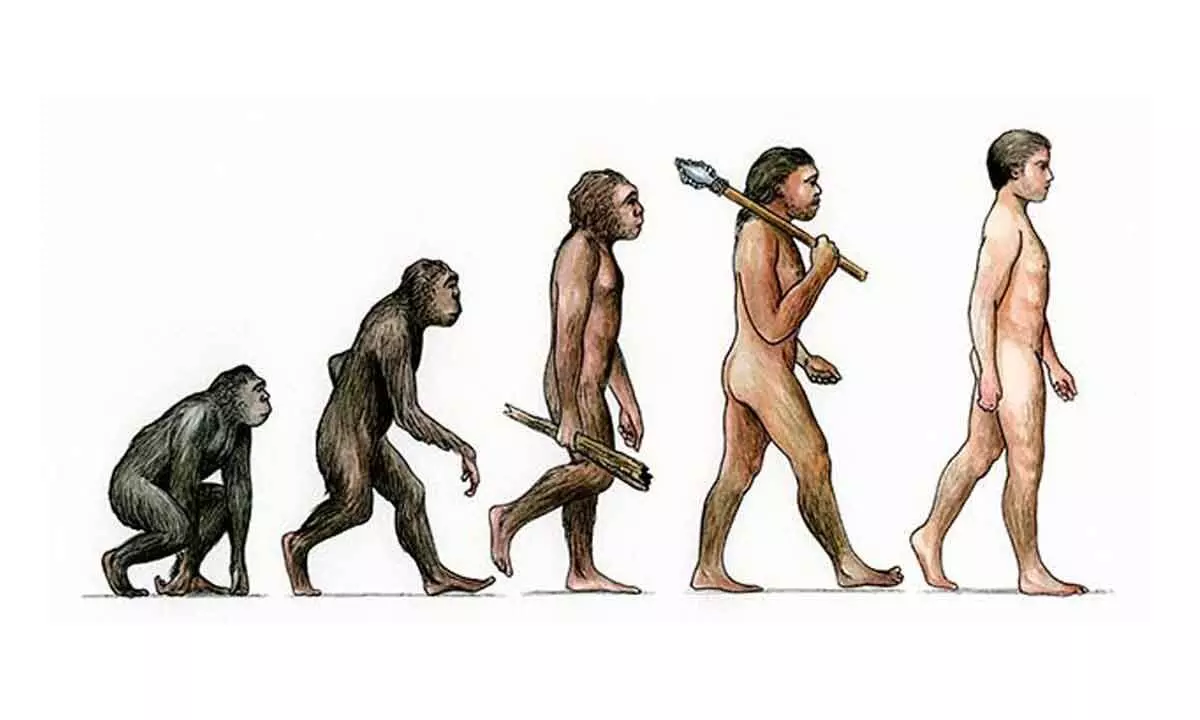Human origin theories set to change now?

Human evolution is the lengthy process of change by which people originated from apelike ancestors. Scientific evidence shows that the physical and behavioral traits shared by all people originated from ape-like ancestors and evolved over a period of approximately six million years. One of the earliest defining human traits, bipedalism -- the ability to walk on two legs -- evolved over 4 million years ago. Other important human characteristics -- such as a large and complex brain, the ability to make and use tools, and the capacity for language -- developed more recently.
Many advanced traits -- including complex symbolic expression, art, and elaborate cultural diversity -- emerged mainly during the past 100,000 years. world opinion on this subject has been centered around Africa as the place of origin. However, the widely held idea that modern-day humans originated from a single region of Africa is being challenged. Models using a vast amount of genomic data suggest that humans arose from multiple ancestral populations around the continent. These ancient populations — which lived more than one million years ago — would have all been the same hominin species but genetically slightly different. The models supporting this theory rely on new software and genomic-sequencing data from current African and Eurasian populations, as well as Neanderthal remains. Researchers published the results on 17 May in Nature. The process of evolution involves a series of natural changes that cause species (populations of different organisms) to arise, adapt to the environment, and become extinct.
All species or organisms have originated through the process of biological evolution. The latest study contributes more evidence to the idea that there is no “single birthplace in Africa, and that human evolution is a process with very deep African roots’’, evolutionary archaeologists at the Max Planck Institute of Geoanthropology in Jena, Germany, now say. The single-origin theory has been popular for decades, partly on the basis of fossil records. But the theory doesn’t fit the data well, it is found now.
All of the tools and physical traits attributed to Homo sapiens cropped up throughout Africa around a similar time, 300,000 to 100,000 years ago. If humans had radiated from a single location, archaeologists would expect to see more recent fossils farther away from a central point, and older ones closer to it. But why should anyone study man’s origin itself? Well, if we know our past, we may behave better. As simple as that. We only have learnt to dismiss others’ views because of their ‘origins’. What if we come to know how exactly we are related through a common ancestor? The latest research is more in quest of the identity of those who gave us our nose, our face and other features and their geographical location.
The ancient hominin species, or ‘ancestral stem’, had localised populations which are thought to have interbred with each other over millennia, sharing any genetic differences that they had evolved. The intertwining of these stems, separated only weakly by their genetic differences, gave rise to a concept of human evolution that the researchers described as a “weakly structured stem” — more like a tangled vine than a ‘tree of life’. More DNA interpolations are to be done to find out the same. Darwin should have known better. Or maybe, he was referring only to his breed when he found his ancestors in monkeys.



















